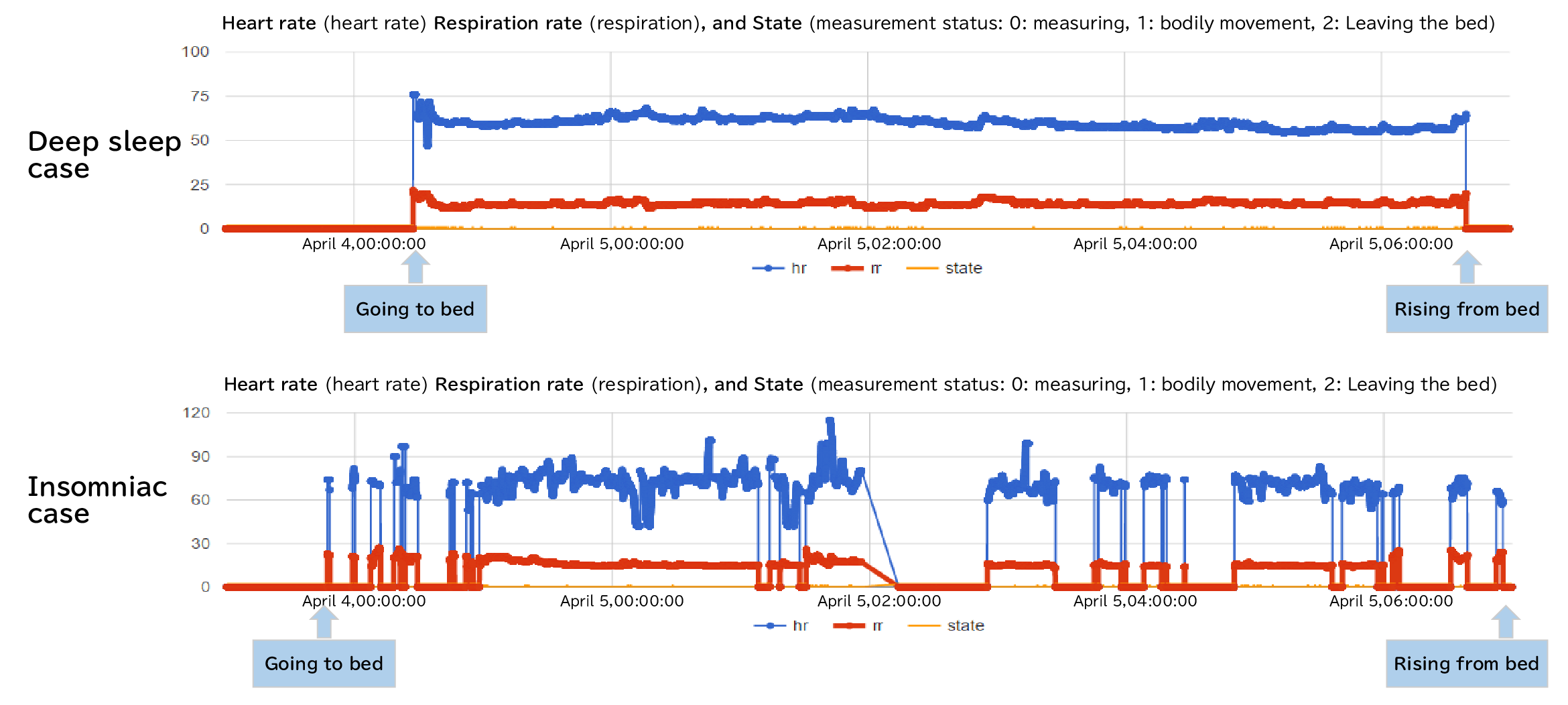Cognitive Impairment Risk Assessment by Deep Learning-Based AI
Arteriosclerosis linked to lifestyle-related diseases is not the only risk factor of ischemic heart disease and neurovascular disorders, but it can also trigger the onset of dementia as vascular cognitive impairment (VCI). VCI related to cerebral arteriosclerosis is also involved in the onset of Alzheimer’s disease and plays an important role in a wide spectrum of cognitive disorders from mild cognitive impairment to severe dementia. Blood biochemistry test data used in health screening reflects lifestyle diseases and organ dysfunction that cause VCI. We developed an algorithm to predict Mini-Mental State Examination scores through the application of deep learning, an AI algorithm, to analyze such blood testing data (unexamined patent application no. 2018-055333).
The Relationship between Dementia and Physical Disability
Dementia is a high-order brain dysfunction, but it is believed to develop as a result of physical disability. In other words, cerebrovascular disorders associated with cerebral arteriosclerosis induced by lifestyle-related diseases and metabolic disorders, such as nutritional imbalance and anemia, can be risks and can become triggers of dementia.
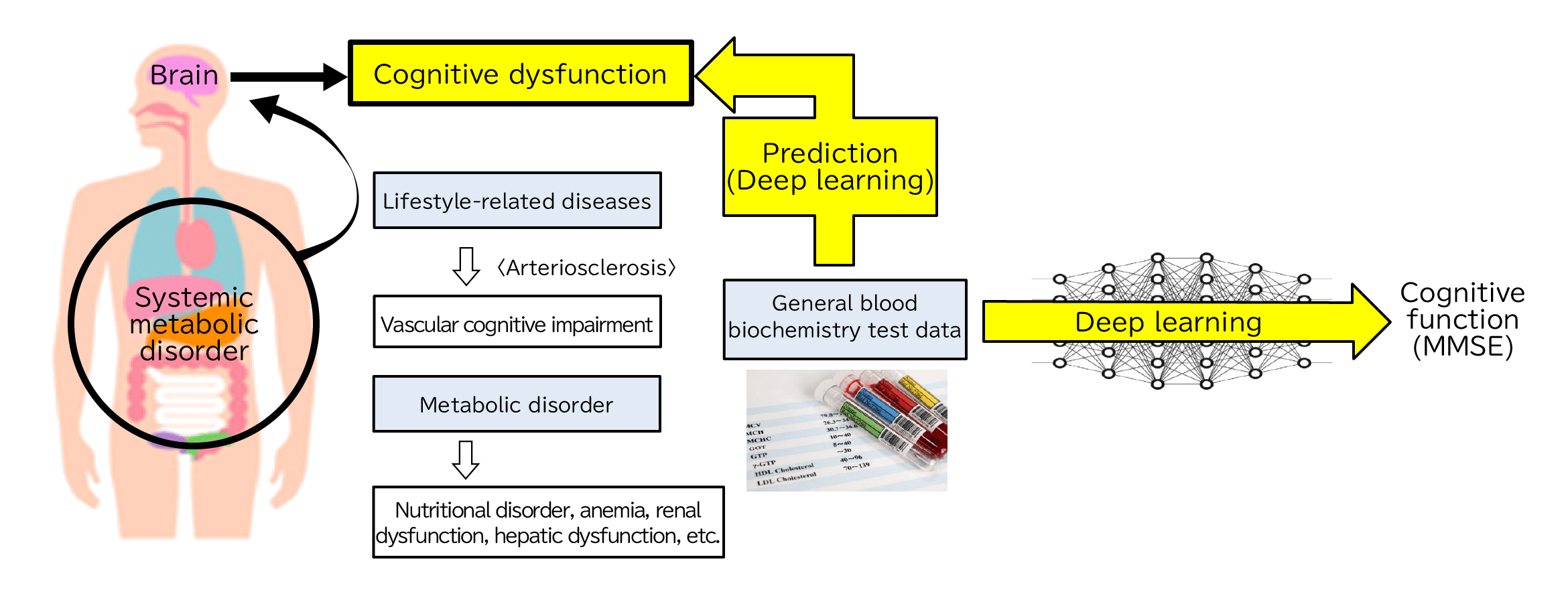
IoT: Health Management System
Digital health that applies leading data transmission technology such as IoT, which creates links between things and the internet, and AI. Sensor technology measures physical and brain functions. Personal Health Records (PHR) are uploaded to a cloud server via the internet to compile big data to allow remote, central AI management of health conditions. This system is installed in non-medical facilities, such as sports facilities, to help users with their routine health management. It lowers the burden on healthcare settings and contributes to new medical processes to control medical fees.
Blood pressure, body weight, and brain function (activity of the prefrontal area at rest by NIRS) can be recorded routinely and semi-automatically through touch-screen computer operations. Data is accumulated on the cloud-based PHR for an AI health assessment. A health fitness programmer explains AI health assessment results.
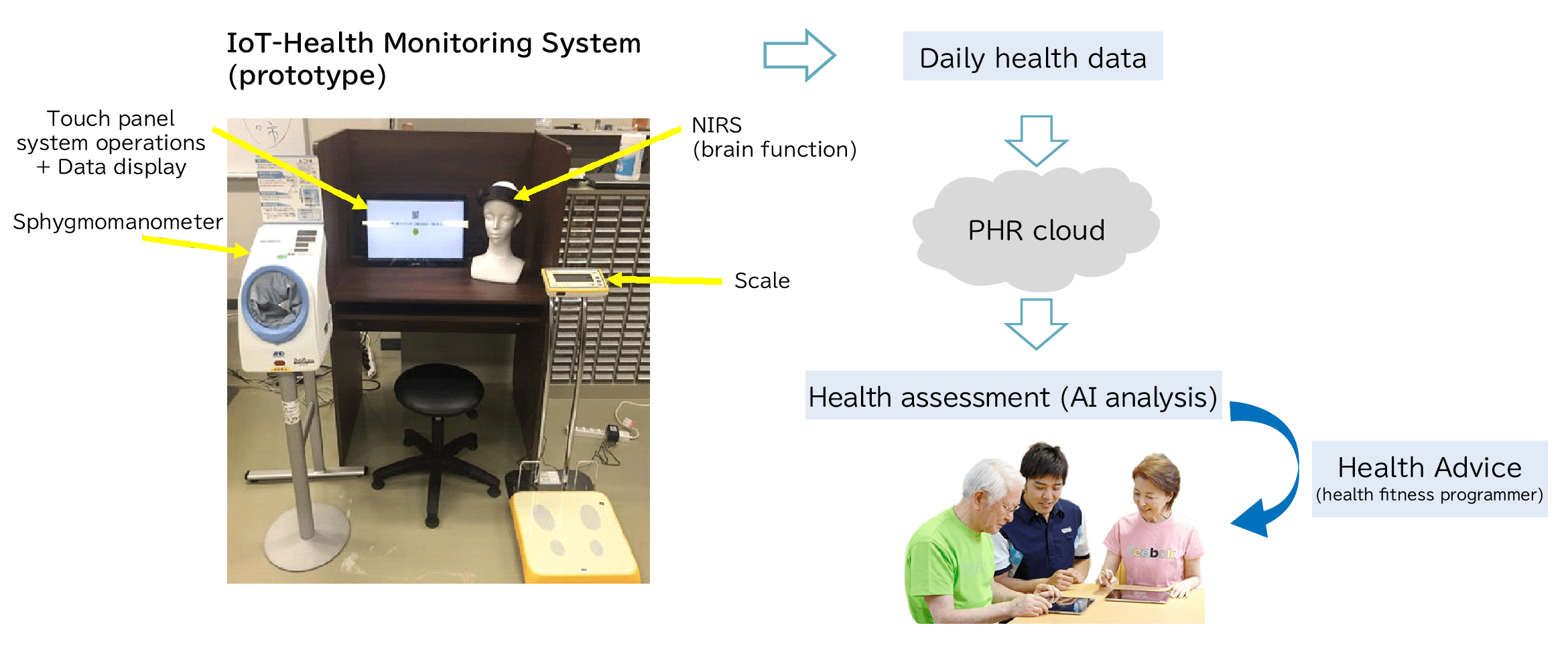
The IoT Health Management System is installed in the fitness gym affiliated with the Koriyama City Health Promotion Organization for an ongoing social implementation study. A total of 116 participants (age, 69.0 ± 7.5 years) used the IoT Health Management system installed in the gym to record their blood pressure, brain function, and body weight measurements. Participants received instructions on how to use the system in the beginning, but took measurements including NIRS independently thereafter.
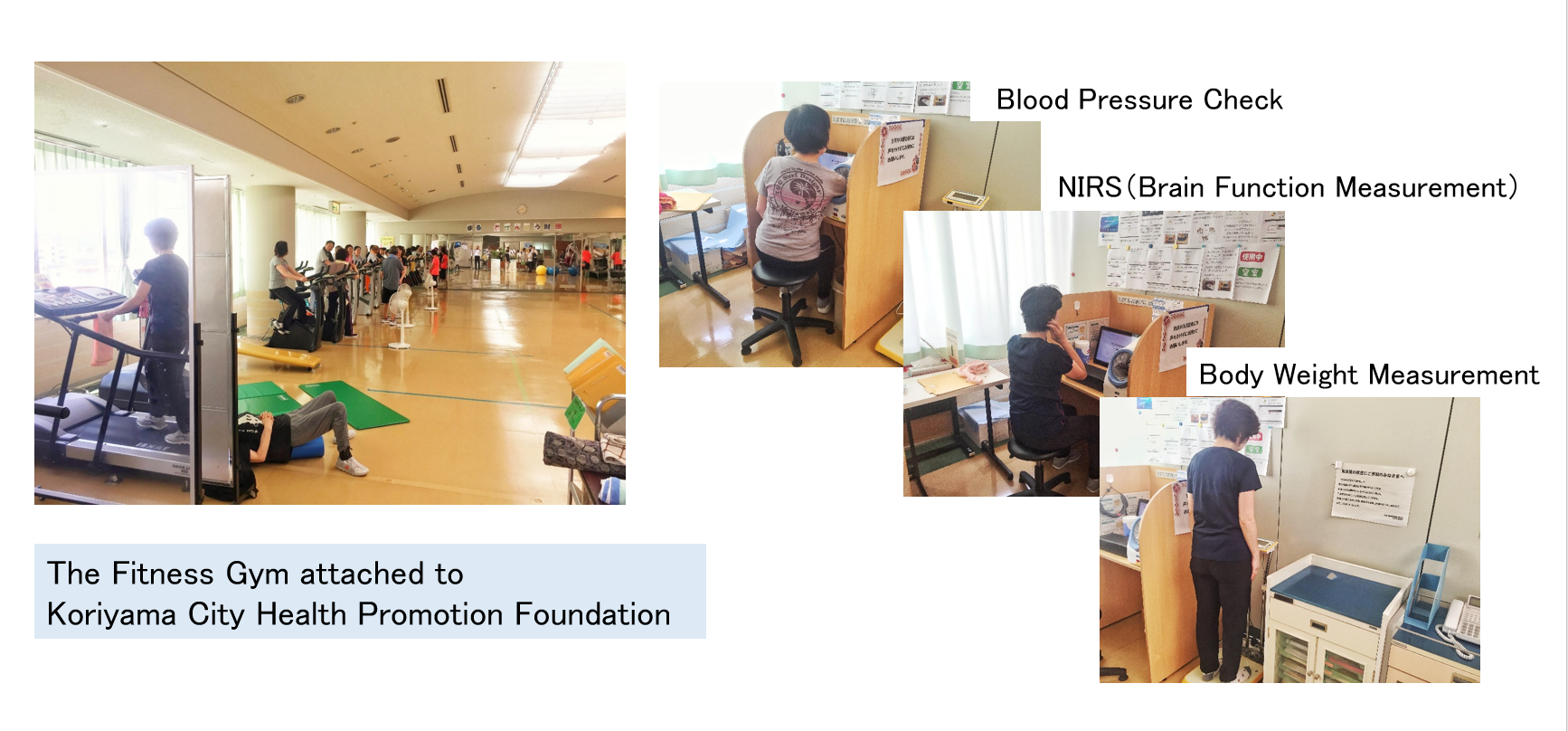
Exercising over a long term (6 months) significantly lowered blood pressure (systolic blood pressure and mean blood pressure) (left figure). Furthermore, prefrontal area activity patterns at rest also shifted from the right-dominance characterizing a stressed brain to left-dominance indicating relaxation (right figure).
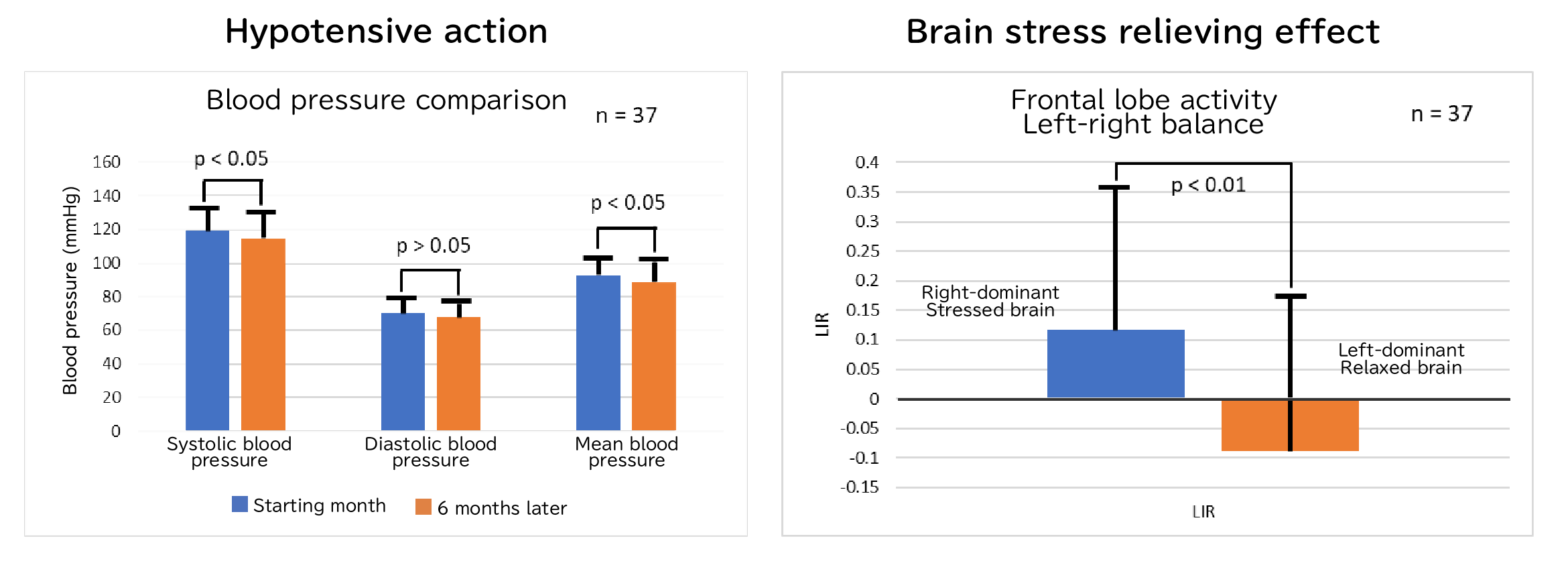
Next-Generation Comprehensive Community Care System
The aims of this system are to use sleep sensors and cerebral blood flow sensors to measure and summarize the daily life and health information of older individuals; to assess the efficacy of pre-disease screening and care based on scientific evidence; to investigate technology that allows for the visualization of stress and cognitive functions; to develop, improve and validate IoT, BD, and AI foundations that allow a safe environment to do so; and finally, to establish a community model linked to promoting healthy longevity, supporting daily life, and the creation of new industries.
Schema of validation studies on the next-generation comprehensive community care system.
Sleep sensors placed in individual homes monitor breathing, heart rate, body movements, and rising from the bed during sleep. Data is accumulated as PHR on the cloud server and will be analyzed by AI. Health classes are routinely held in community auditoriums to assess dementia and stress by measuring brain functions. (April 2015–present: Continued for 1 more year after April 2020)
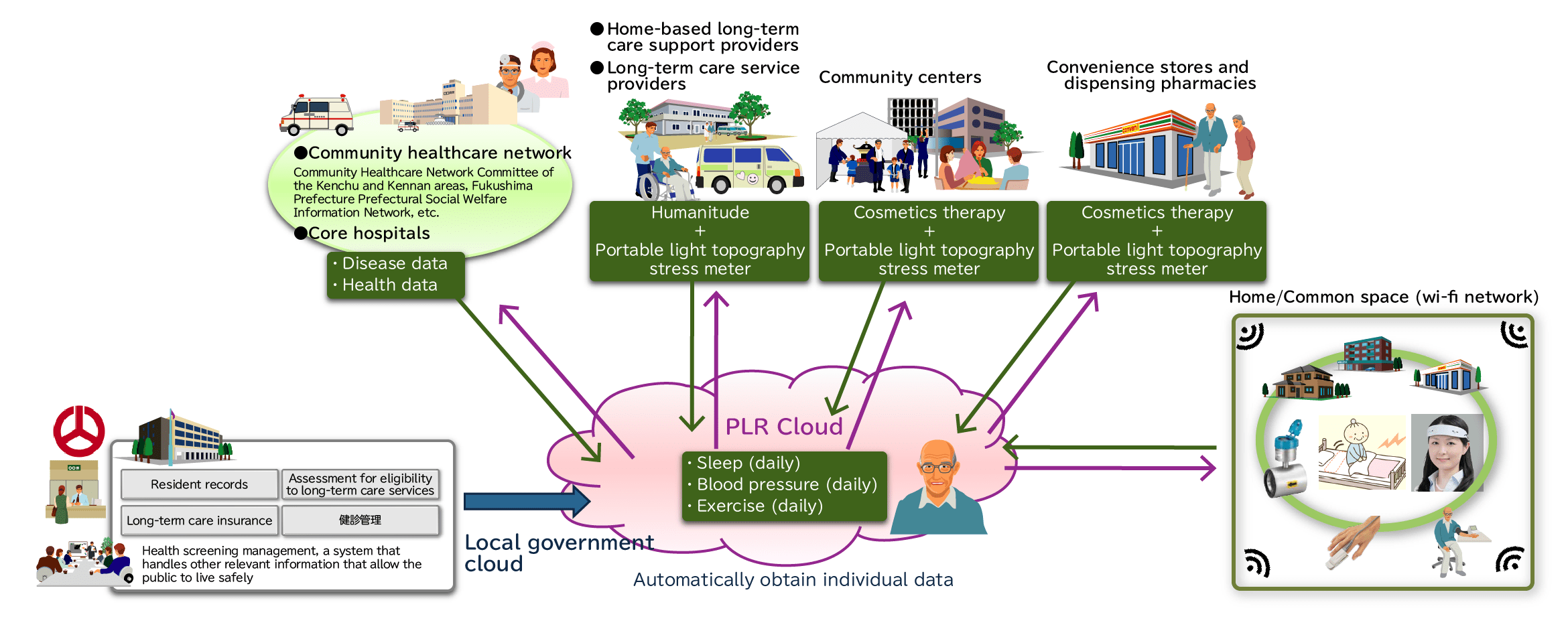
Monitoring example of heart rate (blue line) and respiration (red line) with the sleep sensor.The vertical axis represents frequency/minute, and the horizontal axis represents the time. The heart rate and breathing were stable after going to bed in patients who slept deeply and rising from the bed was not observed (top row). However, in insomniac patients, heart rate and breathing were unstable and these patients rose from the bed multiple times (bottom row).
